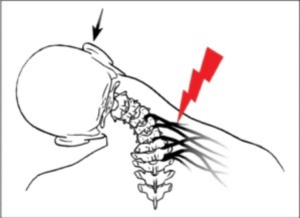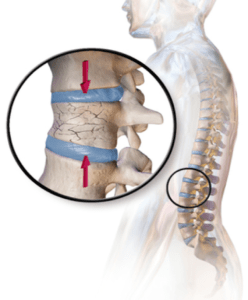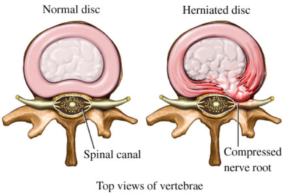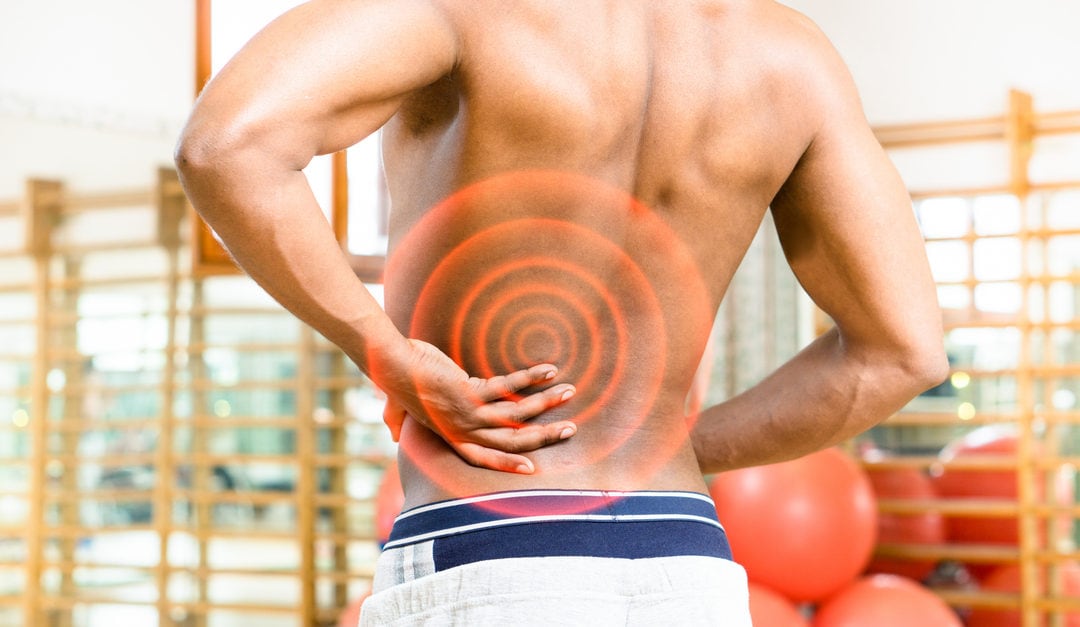Sports and injuries go hand-in-hand but, one of the best ways athletes can protect themselves is through education and awareness. All sports related injuries are serious, but none more so than those related to the spine. The four most common are:
Cervical (Neck) Stingers
Stingers usually occur in contact or collision sports.
When an athlete’s head is forced back and/or to the side, the cervical nerves can compress or over-stretch, which causes pain that radiates through one of the arms. Injured athletes describe this pain as an “electric shock” that lasts from anywhere between a few seconds to minutes.

Illustration 1– The mechanism of injury for a cervical stinger
The best way to prevent stingers is through a comprehensive physical therapy program that focuses on strengthening the cervical muscles, tendons and ligaments. In addition, using proper sport-related technique is extremely important. Football players who block and tackle properly usually don’t have a problem with stingers.
Vertebral Stress Fractures
Repetitive twisting, turning and extending movements place a tremendous amount of stress on the spinal vertebrae. An overloaded spine is prone to sustain tiny vertebral cracks, known as stress fractures. These fractures are most common in:
- Golfers
- Gymnasts
- Cheerleaders
- Dancers
- Divers
- Volleyball players

Illustration 2– Vertebral stress fractures
Common vertebral stress fracture symptoms are pain, swelling and bruising. The best way to reduce symptoms, and also prevent future fractures, is to avoid over-training or consulting a spine specialist when you experience any symptoms as ignoring these symptoms can often make the condition worse.
Lower Back Strains and Sprains
Most common in golfers, weightlifters and gymnasts, lower back muscle strains and ligament sprains can limit athletic performance. Symptoms include pain, swelling, bruising, and weakness. When left untreated, symptoms progressively get worse, sometimes sidelining the athlete.
The best preventative measure athletes can take is to participate in a comprehensive physical therapy program aimed at strengthening and stretching the lower back.
Herniated Discs
Athletes, to varying degrees, flex their spine during practice and competition. When the body twists or turns while the spine is flexed, a substantial load is placed on the intervertebral discs. Overloaded discs can begin to “slip” and result in an injury known as a herniated disc. Common reasons for this type of injury are:
- Overtraining
- Improper muscle balance
- Poor technique
- Overexertion

Illustration 3– A herniated disc compresses the spinal cord and causes a host of unpleasant symptoms
Symptoms include pain, radiating pain, weakness, and numbness in the spine and/or extremities. Treatment is determined upon by an orthopedic specialist, as sometimes surgery is needed.
Professional Treatment
A neurosurgeon is the best medical professional to consult for a spine related sports injury. If you’ve suffered any of the above-mentioned injuries and are in pain, please contact our office to arrange an appointment. Our highly skilled team will get you on the road to recovery. A pain-free return to your sport will come sooner than you think.
Dr. Patrick Senatus is a Board Certified Neurosurgeon in New York City with extensive experience in Minimally Invasive and Restorative Spine Surgery. Dr. Senatus employs a personalized patient-centered approach that prioritizes optimum functional outcome and well-being. Each consultation begins with a comprehensive evaluation by Dr. Senatus designed to create an individualized evidence based treatment plan which includes the patient, family, and collaborating providers.
Following a conservative treatment philosophy, Dr. Senatus offers his patients solutions using the most advanced minimally invasive procedures. His approach is to perform the most effective and least invasive intervention available, specifically tailored to each patient, guided by the principal that surgical options be considered only after all reasonable non-operative therapies have been exhausted. Returning his patients to a functional pain free lifestyle is the ultimate objective.


Recent Comments